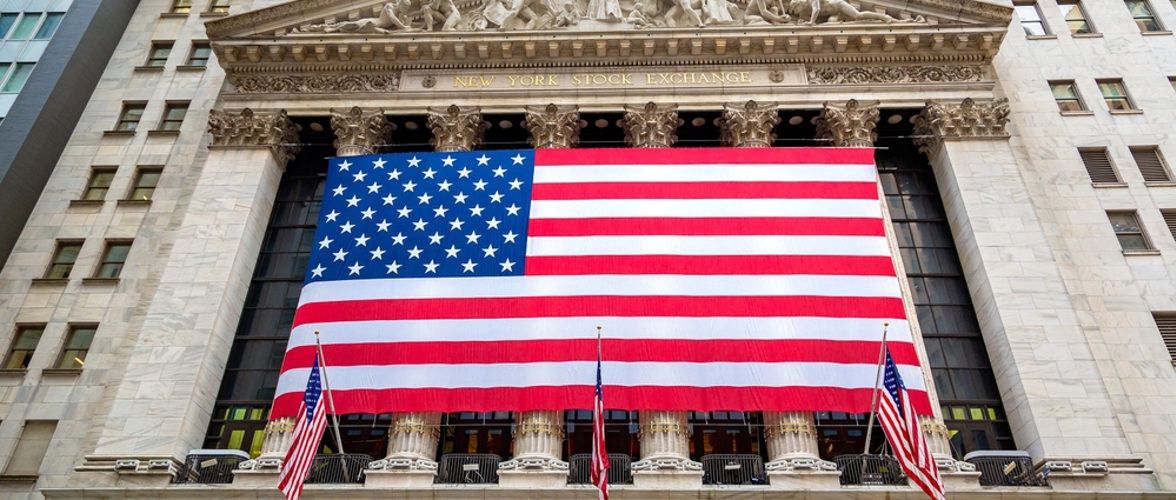Inflationary pressures have continued to spill into the second quarter as high import competition pressures GDP growth and the domestic trade deficit. The economy has been propelled by a continued robust labor market boosting disposable income levels and alleviating economic pressures on consumers to facilitate spending habits despite inflation. With these factors, real GDP has been adjusted to expand by an annualized 2.4% in the second quarter of 2023.
However, the Federal Reserve continued interest rate hikes to curtail spending and to ease inflation back to the target rate of 2.0%. The economy's resilience against recessionary fears has continued to fuel speculation about whether more dramatic hikes are necessary. However, with no signs of the economy recovering immediately, elevated interest rates will continue to temper spending, pressuring GDP growth.
Labor Market
- In the second quarter of 2023, 683,000 jobs were added and another 187,000 jobs in July. Although July's growth fell short of expectations, July reflected a resilient economy and labor market despite continued interest rate hikes.
- The leading sectors for job growth included Health Care, Social Assistance, Financial Activities and Wholesale trade. Leisure and Hospitality has continued to be a top sector for recovery from the pandemic but still falls behind pre-pandemic levels as its growth has slowed to add just 17,000 jobs in July, compared with 67,000 per month in the first quarter.
- The current unemployment rate stands at 3.5% in July, a slight improvement from the previous month, hovering just above an over-50-year low, reflective of the labor market staying on its course for recovery.
- Average hourly earnings increased 14 cents, while purchasing power has risen with a 1.1% increase in real average hourly earnings compared with a year ago. With wages being a key component in assessing inflation, compensation costs have increased 4.5% over the last 12 years, over two times the Fed's inflation target.

Consumer Spending
- Personal consumption expenditures (PCE) grew 1.3% during the second quarter of 2023 and 5.4% year-over-year as of June 2023, indicating that despite inflation, consumers have continued to purchase goods and services, elevating total spending.
- Spending on durable goods grew 0.2% in the second quarter of 2023, boosted by a 1.4% increase in recreational goods and vehicles. Despite promising consumer spending, inflation continues to temper growth, especially among consumers operating on tighter budgets. Consequently, higher-priced items like furnishings and durable household equipment decreased by 1.1% during the quarter.
- Spending on nondurable goods grew 0.3% in the second quarter of 2023, driven by a 1.2% boost in spending on other nondurable goods. Gasoline and other energy goods fell 1.1% as the warmer temperatures curtailed residential energy usage. At the same time, broader inflationary pressures continue to temper volume sales for items such as clothing, footwear and energy.
- Services spending surged 1.5% in the second quarter of 2023, driven by financial services and insurance (2.6%) and housing and utilities (1.8%).
Inflation
- The personal consumption expenditures price index, excluding food and energy, the Federal Reserve's preferred inflation measure, increased 0.8% in the second quarter of 2023. Concurrently, year-over-year inflation stands at 4.1% as of June 2023.
Although the Federal Reserve's preferred inflation measure is the personal consumption index excluding food and energy, the Consumer Price Index (CPI) represents a more common inflation figure for consumers, as food and energy are major household spending categories. CPI, which includes food and energy, increased 3.1% for the year ending June 2023.
- Although energy price growth has slowed in recent months, energy prices have increased by 16.7% year-over-year as of June 2023, making the month the lowest expansion in year-over-year inflation since March 2021.
- Various measures have been taken to combat inflation, including continued interest rate hikes by the Federal Reserve and the Inflation Reduction Act of 2022.

Residential trends
- High inflation has continued to pressure the housing market, with the number of new housing units constructed falling an average monthly 0.6%, with an estimated 1.6 million homes currently under construction as of June 2023.
- Amid these pressures, the Federal Reserve's quantitative easing through hiking interest rates has continued to elevate mortgage rates, curtailing residential construction activity. As a result, residential spending remains in flux, remaining relatively stagnant in the first half of 2023.
- However, residential spending remains up by 1.1% in the second quarter of 2023, reflecting lower energy costs and improved weather conditions in the spring and summer seasons, encouraging developers to resume progress on projects that were delayed amid snowier conditions.
Nonresidential trends
- Nonresidential spending went up 2.6% in the second quarter, driven by continued robust growth in the manufacturing sector, which went up 10.4% in the quarter.
- However, a 1.2% dip in commercial construction in the second quarter added some downward pressure amid high interest rates, economic volatility and ongoing work-from-home policies, limiting demand for commercial real estate.
- Measures taken to boost domestic manufacturing with the passing of the CHIPS and Science Act of 2022 helped expand semiconductor production. Due to the rising technology demand, construction spending grew as manufacturers invested to increase production capacity.
- Construction activity benefited from the Infrastructural Investment and Jobs Act (IIJA) and the Inflation Reduction Act (IRA), providing funding for public infrastructure and sustainable energy projects, driving growth in water supply, public safety and highway and street sectors during the quarter.

Financial markets
- The Federal Reserve continues to make decisions in uncharted territory: a strong labor market and low unemployment despite inflation that will not diminish. Even after 14 months of consecutive interest rate hikes, inflation has shown little signs of being affected, creating a challenge for the Federal Open Market Committee.
- The Federal Reserve raised rates an additional 25 basis points in July following a brief pause in June, bringing interest rates to the highest level in over 22 years. Even though guidance from the Federal Reserve indicates more interest rate hikes, a slight slump in the rate of inflation has given investors hope. Current Federal Reserve projections have interest rate cuts starting in 2024.
- The trade deficit rose 12.2%, exacerbated by foreign supply chains out-performing domestic production. Consumers increased their purchases of imported goods, boosted after the height of the pandemic. In response to rising import volume, the Biden administration has added more trade barriers with China, incentivizing companies to change supply chains.
Distribution of risk ratings
- As lockdowns eased following the pandemic, risk levels tempered significantly in 2021, resulting in 25.8% of industries rated as medium-high or greater risk.
- Rising inflation and supply chain bottlenecks drove up risk levels in 2022, with 38.4% of industries rated as medium-high or greater risk.
- Risk levels have worsened in 2023 amid ongoing inflation concerns and interest rate hikes. Consequently, 53.1% of industries are rated as medium-high or greater risk in 2023.
- However, with interest rate hikes slowing and potential rate cuts in the outlook, risk levels are expected to ease slightly in 2024, with 44.9% of industries rated as medium-high or greater risk.

Sector highlights
- Mining – With the growing popularity of sustainable energy alternatives like solar and wind, the changing market dynamics for energy will continue to cut into coal, oil and natural gas demand. Government support for sustainable energy via tax credits and boosted funding for projects like charging stations will continue to prop up rival industries and encourage concurrent usage, further cutting into traditional energy sources. In turn, competitive pressures for the Oil Drilling & Gas Extraction and Coal Mining industries will continue to rise.
- Agriculture, Forestry, Fishing and Hunting – Even as energy prices have started to ease, this sector has continued to contend with rising prices and borrowing costs for machinery and other vital inputs, further driving up prices for downstream buyers. On top of increasing costs, unfavorable weather conditions from droughts and flooding have damaged farming areas, limiting output and derailing volume sales as consumer prices rise further. As climate concerns intensify and input costs burden farmers, the Corn Farming and Chicken Egg Production industries are expected to be particularly threatened.
- Construction – Climate concerns are set to pressure residential markets as flooding and wildfires drive up insurance rates for hardest-hit areas and discourage costly aesthetic projects. At the same time, rising interest rates and mortgage costs are set to continue to pressure key residential construction markets as borrowing costs remain high despite dissipating recessionary fears. As a result, spending on supplementary sectors will be curtailed as residential construction activity simmers, threatening the Fence Construction and Heating & Air-Conditioning Contractors industries.






